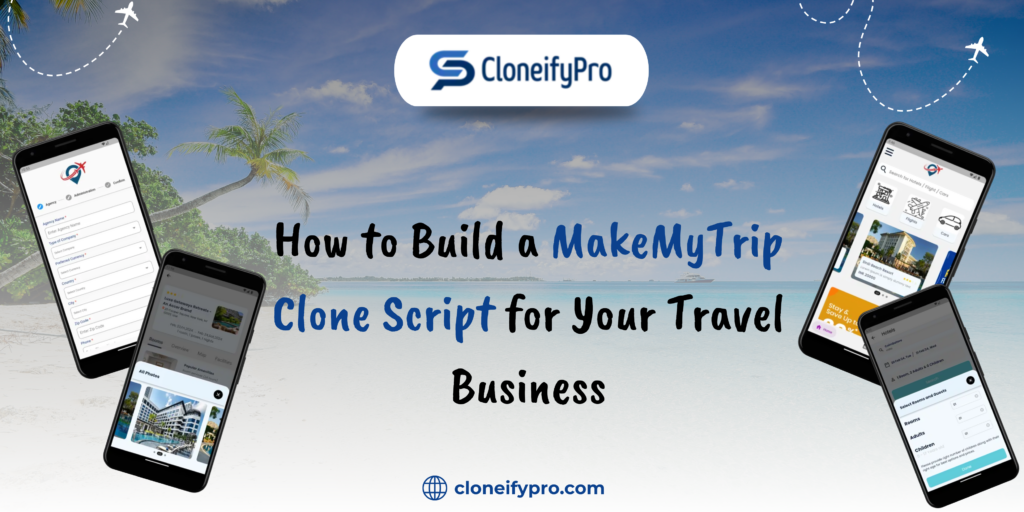
The travel business has seen a dramatic change towards digital platforms in the fast-paced world of today, with online booking systems becoming the standard for tourists looking for efficiency and ease. A leader in this field, MakeMyTrip has established a standard for online travel services by providing a wide range of choices, such as hotel bookings, airline tickets, and vacation packages. Creating a MakeMyTrip clone script offers entrepreneurs hoping to get into the travel industry a promising chance to provide comparable services catered to particular markets or niches.
Over the past ten years, the worldwide online travel sector has grown at an exponential rate. The online travel booking market is expected to generate $817.5 billion in sales by 2025, according to Statista, underscoring the growing dependence of consumers on digital platforms for their travel requirements. This increase demonstrates the profitability of investing in a strong travel booking system that accommodates the changing tastes of contemporary tourists.
Adding features that improve user experience and expedite the booking process is crucial for creating a successful MakeMyTrip clone.
User profiles and registration: Provide individualized user experiences and simple sign-up procedures.
Extensive Search & Filters: Provide users with sophisticated filtering tools to search for hotels, flights, and packages.
Secure Payment Gateway Integration: To increase user trust, make sure that a variety of safe payment options are available.
Real-time booking and availability: Offer the most recent details on availability together with prompt confirmations of reservations.
Reviews and Ratings: To help people make well-informed decisions, let them read and contribute reviews.
Customer service: Provide round-the-clock support to quickly resolve user questions and concerns.
The amount of money needed to create a MakeMyTrip clone depends on several variables, including the location of the development team, the complexity of the features, and the design. According to estimates, the cost of developing a high-end, well-designed trip-booking software might range from $10,000 to $100,000.
Using a pre-made clone script can save money and speed up production. Companies may effectively start their travel booking services with the help of platforms like CloneifyPro, which provide customizable MakeMyTrip clone scripts with the necessary functionality.
To ensure profitability, consider implementing multiple revenue streams:
The challenges of developing a travel booking platform include managing high user traffic, guaranteeing data security, and incorporating real-time data. Use scalable cloud infrastructures, put strong cybersecurity measures in place, and collaborate with reputable data providers to address issues.
A smart way to capitalize on the growing online travel market is to create a MakeMyTrip clone script for your travel company. You can make a platform that is unique and satisfies the changing demands of modern travellers by emphasising user-centric design, adding necessary functionality, and implementing successful monetisation techniques.